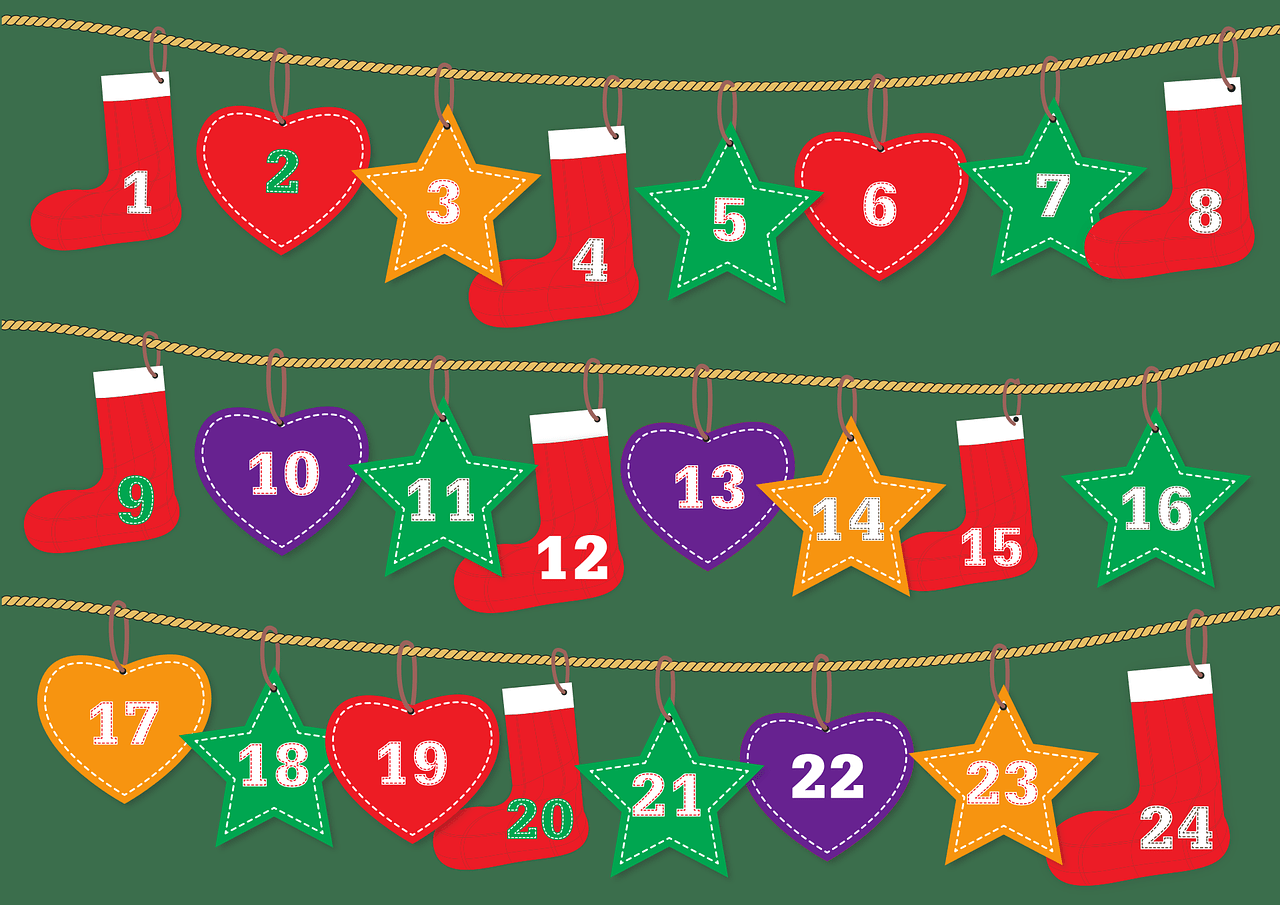
The Advent Wreath
Before Christianity began, it was a Scandinavian custom to place a lit candle on a wheel as a symbol of hope. People prayed to the God of Light to ‘turn the wheel of the earth’ back towards the sun. Later, this symbol was incorporated into the traditional advent wreath in Germany. While the use of advent wreathes as part of the Christmas preparations may have begun before the 1600s, Pastor Johann Hinrich Wichern is credited as their ‘inventor’. In 1839 Pastor Wichern used an old cartwheel to help the children in his mission at Rauhes Haus in Hamberg to count the days to Christmas. He added small candles Monday-Saturday and a large white candle on the Sundays. As people began to travel out of Germany, they took the tradition with them and the idea spread around the world.
The decoration of the wreaths have been given meaning by Christians with evergreens for ever-lasting life; holly representing immortality or the crown of thorns; and pine cones immortality and resurrection. From a less Christian perspective, these objects are also symbols of winter and the celebration of the season starting on 21st December (the day of the winter solstice). Where coloured candles are used, these also have meaning: purple symbolises prayer, penance and sacrifice; and the rose candle lit on the third Sunday symbolises joy that the half-way point has passed. A fifth, white candle may be placed in the centre to represent the birth of Jesus.
One thing that I tend to forget with advent wreaths, is that the first Sunday is not in what we generally consider to be advent itself. This year it was the 28th November. If you are going to use a wreath it is helpful to remember that it begins on the Sunday closest to the 30th of November (or four weeks before Christmas Day if that falls on a Sunday) to make sure you put it out in time!
Printed Advent Calendars
Along with lighting candles, some 18th century Germans also wiped away one of the specially drawn 24 marks on doors as they counted the days to Christmas. According to the Christmas Museum (www.weinachtsmuseum.de) the first advent calendars were given out on St Nicholas’ Day (the 6th of December) and so were known as Nicholas Calendars. They then started to begin on the 1st December and were initially called Christmas Calendars, before becoming advent calendars.
The first printed advent calendar was a clock design in 1902. This was superseded by Gerhard Lang’s design of doors in the early 1900s . He had been inspired by a calendar his mother had made for him consisting of cookies in 24 pockets of a box lid. Lang designed the calendars to have opening doors with pictures printed behind them. I’m not as old as this, but I do remember having picture calendars when I was young, before I began receiving a chocolate version.
Chocolate Advent Calendars
Gerhard Lang was also the person to bring us the chocolate calendar in around 1926 (a Nicholas Calendar). It contained 20 pieces of chocolate from the Stollwerck Company, an addition possibly inspired by his mother’s cookies. However, some sources state that the first chocolate Advent calendar was not available until 1958.
Advent Calendars in the UK
The apparent discrepancy may simply be context. It is likely that the early Advent calendars in the UK had arrived as gifts or had been brought over by immigrants. By 1956 however UK manufacture had begun, and the first chocolate calendar was produced in 1958. Cadbury’s began to make chocolate calendars in 1971 but they didn’t become popular until the 1980s. For some, this highlighted the move towards the heavily commercialised Christmas and festive over-consumption we have today.
Of course, these days you can get a wide variety of advent calendars, with some being better for your health than chocolate or sweets as they contain ‘gifts’ such as toys, collectables and other non-edible items. And, you can buy or make fabric calendars containing pockets to fill yourself each year, a more environmentally friendly option than the throwaway card and plastic versions. These are also reminiscent of the ones Gerhard Lang received from his mother all those years ago.
World Records
Surprisingly there are world records related to advent calendars. According to the Guinness World Records (https://www.guinnessworldrecords.com/ ):
- The largest advent calendar was built in 2007 at St Pancras station. It measured 71 metres high and 23 metres wide.
- The most valuable advent calendar was valued at the equivalent £2,100 in 2010. The calendar included 124 diamonds!
- The fastest time to eat the chocolates from an advent calendar was 1 minute 27.84 seconds. This record has been held by Kevin Strahle from the United States since 2017. Something tells me he wasn’t savouring the taste of each chocolate on that day!
Variety
Despite my profession, confectionary calendars are not banned in my house! But I’m afraid I do remind my son when he has them that it isn’t normal to be eating chocolate every day – it is very much a December treat. And, that tiny bit of advent chocolate is by no means equivalent to eating a daily chocolate bar (which he doesn’t have in any month)! It is important to me that he learns healthy habits from a young age and the importance of eating a healthy diet as his normal diet. He has commercial calendars and last year, a talented friend made a fabric pocket calendar for him and gave it to him filled with sweets. That certainly brightened up his lockdown year!
I really like my wooden calendar that has a set of doors on it with decorations behind them. The decorations hang on the scene above. As much as I like my son being involved, I do have my own method of hanging them so that I finish at the top – it is MY calendar and the system cannot be interfered with! We did buy the calendar a few years before he was born so it was definitely not purchased with him in mind. I even like to rewrap the decorations in their little pieces of tissue paper and mix them up as I put them away so it is different each year (except the one for the 24th which I keep as the angel and star).
I suppose the big novelty is receiving an advent calendar with 25 doors – they are very rare! However you and your family choose to count the days to Christmas, I hope you enjoy the festive period.



